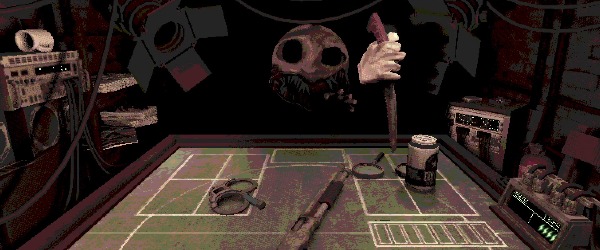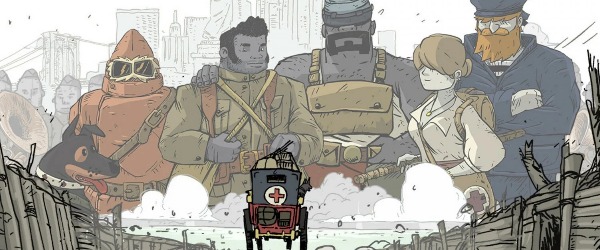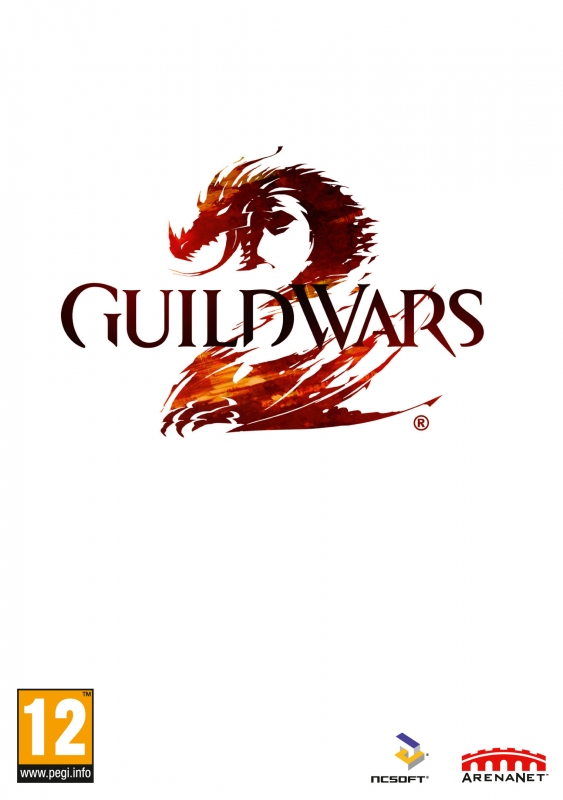
Guild Wars 2 - Review
by Brent Galietti , posted on 04 September 2012 / 59,223 ViewsNote: To try and cover as much of Guild Wars 2 as possible, we’ve made this a Massively Multiwriter Review, written by Kasper Andersen, Brent Galietti, and Nick Pantazis. Each section’s author will be mentioned before it begins.
Intro (Kasper Andersen)
Guild Wars 2 is the much anticipated sequel to the games that made up the original Guild Wars experience, taking place in Tyria, the same continent we visited in the Guild Wars Prophecies campaign. The first Guild Wars game made a name for itself by not having monthly fees, and focusing on player skill, rather than time spent leveling and collecting loot, but it wasn't without shortcomings. For example, you could only meet other players in the various cities and outposts, and most notoriously, you couldn't jump!
For the fine folks at ArenaNet, this simply wasn't good enough, and years of hard work to improve on it have now culminated in Guild Wars 2, a game that not only changes and improves everything about Guild Wars, but ups the ante on every MMO already released. Not only is the world now persistent, it's also alive through the advent of dynamic events. And not only can you now jump, but moving and dodging make the gameplay more strategic, visceral, and above all, fun than most other MMOs. Guild Wars 2 is a truly massive game, which is fantastic in its own right, and there's no way we can give you a full verdict of the game at this time. But bringing you a verdict fast is our priority, so you can better decide whether to join in now rather than wait for us to try and see everything the game has to offer.

Gameplay (Kasper Andersen)
The gameplay builds on the same ideas we know from the original game: Limit the players to a small set of skills in combat, but allow them to customize their build outside of combat. Each profession has access to the same building blocks in this aspect. Your first five skills are determined by what you're holding in your hands (whether it's your weapon or one of the variety of items spread throughout the world). You are allowed to have two weapon sets you can swap between in combat, effectively allowing you to swap role in the middle of combat. Taking a pummeling in melee range? Move out of the way and switch to a ranged weapon for a break.
Each profession has access to close range weapons and longer ranged weapons, and while every weapon is usable by more than one profession, they each handle the weapons in different ways. So while rangers, mesmers and warriors can all use two handed swords, they each play differently with them. This makes group combat extremely dynamic, because everyone can take on different roles at any point. Casters can not only be supporters and damage dealers, but also tanks, and a typical long range profession like the ranger can dish out some serious melee damage.

Having broad support roles is made extra important by the fact that there are no dedicated healing professions. For this reason each profession needs to carry a healing skill of some kind, which is always placed in the sixth slot on your skill bar. The four final skill slots are yours to use as you please however, with the only restriction being that the final, tenth slot must contain an elite skill, which is, as the name implies, an especially powerful skill.
This can feel a bit restrictive at first, especially compared to the dual profession system of the first game, but once you unlock enough skills and skill slots as you level up and explore, the system starts to show how robust it really is. So once you find your groove, start getting some traits, and find a few combos you like, it makes up for the restrictions, as the combat feels very fluid and dynamic. This is not only down to how you create your build, but also the emphasis that is placed on movement. Most skills can be used while moving, and you have a dodge move you can use to roll out of danger, bringing ample opportunity for using strategic placement to your advantage. So even though Guild Wars 2 is still based on the age old skill bar setup that has been used in so many MMOs now, the game refines it and everything around it, and brings a level of dynamism and engagement to the combat that few MMORPGs can match.

Player vs. Environment, Presentation (Brent Galietti)
Much of your time spent in Tyria (especially early on) will likely be in PvE: Player vs. Environment mode. You will face off against many enemy creatures to gain experience points, but that is not the only way to grow. All across the world, there are waypoints, points of interest, and vistas. Waypoints, once activated, allow you to warp across the map quickly for a small fee. Points of Interest are key areas on the map and Vistas are hard to reach locations that reward you with a panoramic view of the world. All of these reward you with experience points, giving incentive to traverse the enormous world of Tyria. Guild Wars 2 does an excellent job of balancing EXP gain for different methods, allowing you to feel fairly rewarded no matter what you are doing.
While exploring, you will come across various quests and events. A major strength of Guild Wars 2 is that you don’t have to seek out every quest; many of the quests will come to you. By walking into an area where a quest or event is occurring, the quest/event triggers, detailing what needs to be done and the current progress. You’ll often be teaming up with many other players to achieve this goal, which includes various tasks ranging from destroying enemies to cleaning up messes to protesting against public figures (yes, really). After the progress bar is filled, EXP, money and items are awarded through the in-game mail system. Events work a little differently in that these are special, more random events and are usually much tougher, such as defending a village from waves of enemy attack, or slaying a huge, powerful monster that is causing mayhem. ArenaNet has done a great job of balancing the scope of the quests throughout the game; while some MMOs might leave their best battles or quests for the highest level players, Guild Wars 2 sprinkles them throughout the game. Even in my first few hours, I got to face a strong shark-like creature that required the assault of many players to finally quell.
When not battling or questing, you’ll be running through the beautiful land of Tyria. That’s a massive understatement; Guild Wars 2’s world feels realistic and alive. Each area varies greatly from the last one, and each one is full of landmarks, natural wonders, wildlife and more. A lot of fun can be had just by looking at historical monuments, traversing through forests or swimming through Tyria’s vast lakes. Even though Tyria is a fantasy world, it feels like an entirely real world – located just a quick login away from terra firma. You also will not have to worry about your graphics settings; if they are low, you will still be able to join the beauty, but if they’re high, you’ll undoubtedly be blown away. Check the screenshots in this review if you don’t believe me, and then realize it looks even better in motion.

You'll also enjoy the audio. The music was composed by Jeremy Soule, whom you may remember from Skyrim, another soundtrack that he composed, and he strikes gold again, producing both memorable songs as well as great ambiance that further draw you into Tyria. The sound effects of weapons slicing, bombs exploding, and spells activating sound great, exactly as you would expect them to. No corners were cut in making this game sound just as great as it looks.
If you want to change your armor, weapons, and other such tools without waiting for random enemy drops, you can do so through crafting and salvaging. All across Tyria there are specialists, such as armorsmiths, weaponsmiths, and chefs who can take you on as their apprentice. That allows access to crafting, where different items can be combined to create new items that will be of better use to you. Some basic recipes are available at start, and you can get more as you gain experience in the craft, or if you experiment and stumble upon one. You can specialize in two crafting disciplines at a time, but can switch to others for an in-game fee. Items used in crafting can be picked up around the world, awarded through quests, sold to you by the crafting masters, or made yourself through the salvage kit given to you early in the game.

Story (Kasper Andersen)
While Guild Wars 2 features a living, breathing world for every player to share, it's also got some more intimate content, namely the personal storyline. ArenaNet have sought to bring the storytelling of offline RPGs to Guild Wars 2, which means a long and customizable story. There's plenty of choices to be made, starting with your character's background during character creation. The story is generally good, with each race receiving their own storyline, and the choices the player makes impacting their experience to varying degrees. The game makes these choices very explicit, which can be a bit disconnecting, especially when the things you have to choose between don't seem to be mutually exclusive. Fortunately it works well the majority of the time. Strong voice acting stitches everything together - you feel connected with the plights of the characters and will feel the gravity of your decisions as you progress.
Should the personal storyline leave you with a hankering for even more story though, the dungeons in the game have a bit to give as well. Each dungeon comes with a story mode, which you run through the first time you play the dungeon, and you will get some story related to the iconic heroes of the different races, and the world itself as well.

Player vs. Player, World vs. World (Nick Pantazis)
Competitive play in Guild Wars 2 is far from standard for an MMO. There are two primary competitive modes, which are World vs. World and the more standard structured PvP. Neither is what you’d expect from an MMO’s competitive systems. There are also a number of competitive activities in the world, which differ wildly from anything you’ve likely played in an MMO before. For example, in the Bar Brawl activity you have all your conventional weapons removed and must bash each other with various items you can pick up around the bar (bottles, stools, etc.). In Keg Brawl, you play a funky amalgam of basketball and beating the crap out of each other, wherein the goal is to run the keg to a goal while avoiding other players, passing as necessary. There are a number of other local competitive activities, and most are great fun.
Unlike most MMOs, structured PvP in Guild Wars 2 does a lot to keep things skill-focused instead of gear and level based. You will compete in teams of five to eight players in hot join or five players in tournament play. The game automatically maxes your level in PvP. Even better, you have set PvP gear, and can respec your skills in PvP at any time. This means that how you do is almost entirely based on how good you are. There are no PvE rewards for structured PvP, and the only thing you earn from it is glory points, which can be used to buy better looking (but not better) equipment from glory vendors. This maintains an excellent balance throughout the system. Sadly, the only game mode available at launch is conquest, but it’s a lot of fun to play.
World vs. World is almost an entire game of its own. You can drop into a massive persistent world vs. world vs. world map at any time during play. This map is divided into three parts, one for each world (server), and a fourth section in the center which is controlled by none of the parties at the start of play. Each map supports roughly 500 players per world, and all players automatically have their levels maxed and abilities granted so that they can compete. The goal is to capture various points around the map together with other players from your world, and in doing so earn points for your war score and bonuses for your world. Play lasts two whole weeks, after which the winner is the world with the highest war score. A new match then begins with other worlds based on your world’s standings in a ladder ranking system, to keep things competitive.

Within the World vs. World game you’ll be completing all sorts of activities to earn those coveted victory points. You can capture objectives such as resource camps, towers, keeps, and a castle. Each of these will add to your war score, and capturing them and holding them makes up the bulk of the strategy of the game. Small things like resource camps can be captured in small groups, but larger objectives like keeps and the castle will take a concentrated force of dozens if not hundreds of players to break down their defenses.
And boy are there some crazy defenses. In addition to simple guards, objectives can have walls or a door that need to be broken down, a powerful lord defending them, and even a second set of inner walls for defenders to fall back on. The whole time you’re attacking these walls or gates, defenders on opposing worlds will be fighting you back from the inside, assisted by NPCs. Because of the strength of these walls, siege weapons are essential. These have to be crafted within the World vs. World match, and are constructed by spending supply earned from holding objectives. Supply can also be spent on repairs of walls and doors and upgrade purchases.
If all of this sounds crazy and enormous, understand that it is, and I’ve barely scratched the surface of the content in the description in this review. There is much more, including mini dungeons and special NPCs that drop crazy items, guild bonuses for capturing, and all sorts of other features. Participating in World vs. World gives you experience and loot for defeating enemy players and NPCs, so you won’t be left behind by your friends who PvE a lot if you happen to love PvP.
The downside is World vs. World is so enormous that it can feel pretty chaotic, and if your world isn’t organized in any way you may find yourself wandering randomly and attacking where you can, but it’s still fun to explore and compete with these massive groups. There is a lot of strategy in where you attack and when, if your world is up to the challenge, but tactically the size of the battles makes your individual contribution feel a little less important. If you prefer the more intimate and tactical style, structured PvP is always there to meet your needs. The combination of World vs. World and structured PvP makes Guild Wars 2 one of the most unique, balanced, and enjoyable competitive MMOs in existence.

Conclusion (Brent Galietti)
So after all of that, it should be obvious where we stand on Guild Wars 2. It is an amazing, brilliant, awesome game that takes many positive elements of the MMORPG genre while changing up many other staples for the better. It’s entirely possible that the game will change between the publishing of this review and when you first play it. However, based on what we have experienced, we are confident that ArenaNet will continue to keep Guild Wars 2 in the upper echelon of gaming for years to come. Simply put: If you want to know whether you should take the plunge into Guild Wars 2, the answer is a resounding yes. We will see you in Tyria.
VGChartz Verdict
9.5
Outstanding


























